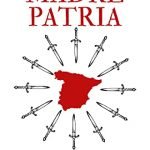
Contents
Who were the Filibusters?
The emergence of the Filibusters, their change of life, their conversion from buccaneers to pirates on Turtle Island and their power with English support on the island of Jamaica.
What does Filibusteros mean?
A very common question
According to the Dictionary of the language:
“Pirate, who by the 17th century formed part of the groups that infested the sea of the West Indies.”
One way of storing their booty was to bury it on deserted islands.
Sometimes they accumulated great wealth, and chose an uninhabited island to hide their treasure.
Buccaneers on Turtle Island
With the disappearance of hunting on the island, many became Pirates, known as Los Filibusteros.
The Filibusteros, the most feared of the Pirates.
People from inland, came to lead the hard life of sailors enclosed in a fragile ship. Some buccaneers who were mainly dedicated to hunting, become fierce pirates.
Thrown out of their paradise on the island of Hispaniola, some of them discovered piracy as a way of life and ended up being the worst of the pirates.
Why were they called Filibusteros?
It soon became known that groups of people whose objective was to get rich quickly also arrived in the New World. They did not accept laws or rules and sought to get rich mainly by stealing from Spanish ships or towns if possible.
Unscrupulous people who robbed, raped or murdered without any remorse.
From Buccaneers to Filibusters
These were joined by some groups of buccaneers, who due to the pressure of the Spanish troops decided to go for a riskier life, but with bigger and easier booty.
Some buccaneers, who spent more time on the beaches than hunting in the forest, opted for piracy. With piracy they got more results and faster. They saw that they got more loot by raiding ships than by hunting and trading. These ancient buccaneers began to be called Filibusteros.
It is believed that Filibusteros is a modification of the English word freebootes which means privateer.
French Adventurers
Hunters, but also pirates if they had the opportunity.
It is believed that the origin comes from a group of French and some Englishmen who settled on the island of San Cristobal. They lived together for a while, and joined forces to fight the indigenous people of the island, whom they even exterminated.
Captained by the corsair Pierre Belain, the French, and by Thomas Warner, the English, they established a buccaneer colony. But some of them carried out actions as Pirates and Corsairs. The arrival of a new French fleet with reinforcements unbalanced the balance in favor of the French, who became the majority and cornered the English in an area of the island.
The Spaniards under the command of Admiral Oquendo expelled them all and they settled in areas of the island of Hispaniola. Expelled again, they took refuge in several islands from which they were again evicted. They finally ended up on Tortuga Island.
This island, being close to the island of Hispaniola, could be used as a refuge and a starting point for their misdeeds. Located very close to the main naval route between America and Spain, they could board the merchant ships that passed through it.
After being there for a while, some of them decided to join, and created the Brotherhood of the Brothers of the Coast. This brotherhood lasted for decades.
They took over Panama
The riches concentrated in the city of Panama attracted an expedition of 3,000 filibusters, captained by Morgan.
They had to cross the jungle from the Atlantic to the Pacific, withstand attacks from the natives and all kinds of calamities. When they reached the city, several surprises awaited them. The Spaniards created a stampede of animals in their direction that was about to run them over, but they were lucky enough to be able to divert it at the last moment. Not only did they take over the city, they tortured and killed its inhabitants. All out of frustration at the little they got.
They discovered that the riches had been shipped and were safe on a ship that left immediately for Spain, when the Governor found out that they were approaching the city.
Filibuster attacks
Terror in the Caribbean
They had as many as 50 pirate ships
For a century, the filibusters challenged the Spanish power in America. They not only attacked ships, but also mainland populations. They even attacked the island of Cuba where they captured several ships full of all kinds of riches.
In Maracaibo, they took over the city, and stayed there for months, killing and doing all kinds of barbarities. But they were not isolated ships loaded with filibusters. They were real flotillas of well-supplied and armed ships that departed from the English island of Jamaica.
The capture of the fortified city of Portobelo was a hard blow for the Spaniards, both because of the number of troops and the fortifications that the city had.
They even dared with the city of Panama. It was taken, its survivors tortured, taking 600 prisoners who were massacred on the return trip by land from the Pacific to the Atlantic.
Ambitious and cruel pirates
Their safe havens were Turtle Island and Jamaica Island.
They boarded like beasts eager for riches.
Pirates without mercy
Pirates who usually did not take prisoners, unless they could get a reward for them. Women were taken to the taverns of Tortuga Island or Jamaica.
The filibusters were active from Tortuga Island or Jamaica and attacked the other islands, as well as ships passing through the Caribbean, or even populations of the American continent.
They tortured their prisoners to find out where they had hidden their wealth. Some of the most famous filibusters had stood out for being bloodthirsty and cruel. They had no limits when they wanted to get loot.
The Olonese was one of the filibusters that stood out for his great cruelty with the prisoners. He even took out the heart of a still alive Spanish prisoner, put it in his mouth and chewed it.
Their End in the Caribbean
France stopped giving them protection and began their end and almost extinction.
England did the same and expelled them from Jamaica. Without safe havens, they were soon cornered and fell ship to ship.
When a member of the French Bourbon dynasty occupied the Spanish throne. Louis XIV considered that Spain and France had the same interests and pursued piracy in all his zones of influence. When France made peace with Spain everything changed. Isla Tortuga was given a French governor. He reorganized the island and brought French women and servants.
Disputes between French and English members of the Confraternity of the Brethren of the Coast precipitated its dissolution in 1700.
Without support from any country, they soon disappeared from the West Indies. Some moved to other maritime routes, such as the Indian Ocean or even the Pacific Ocean.


